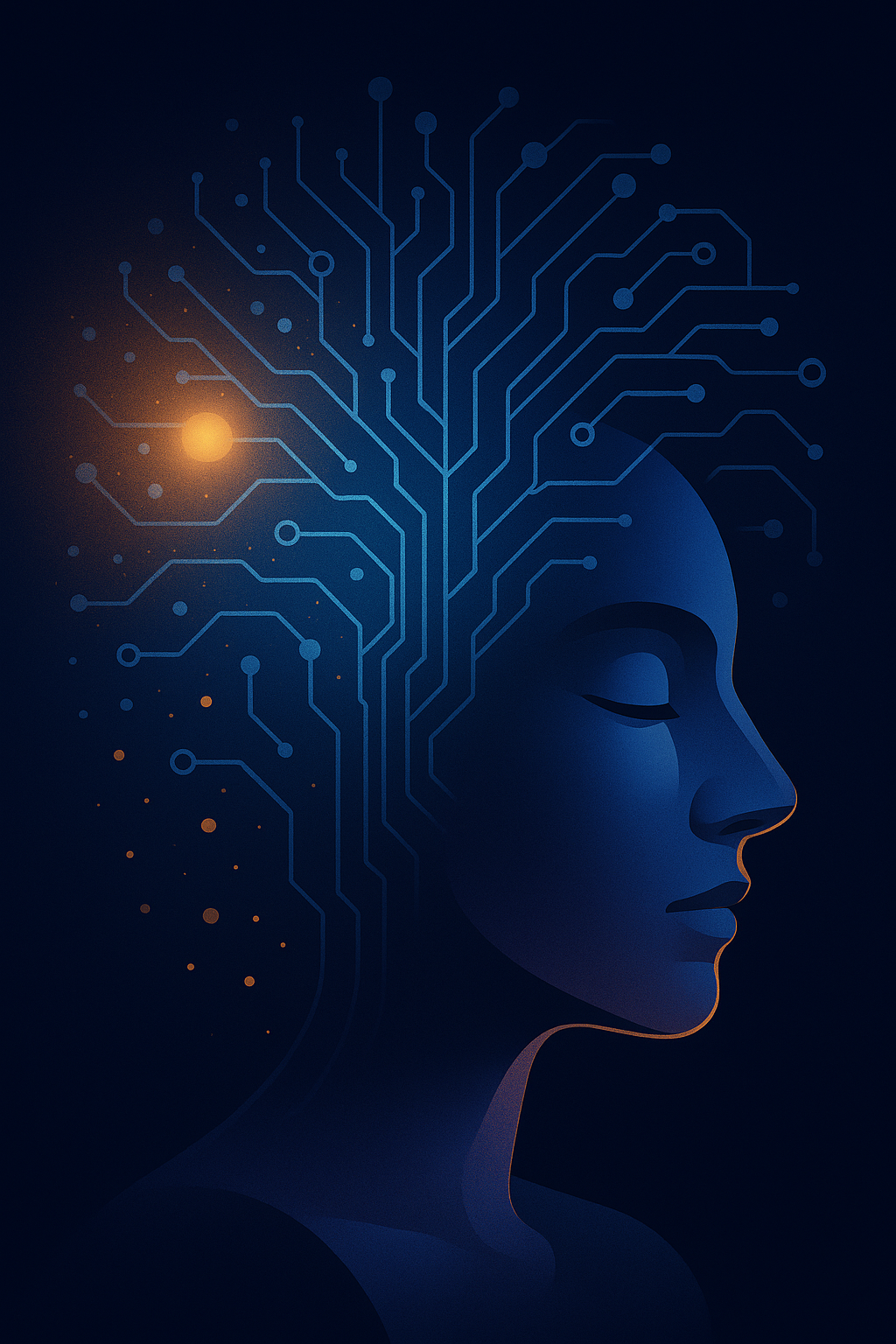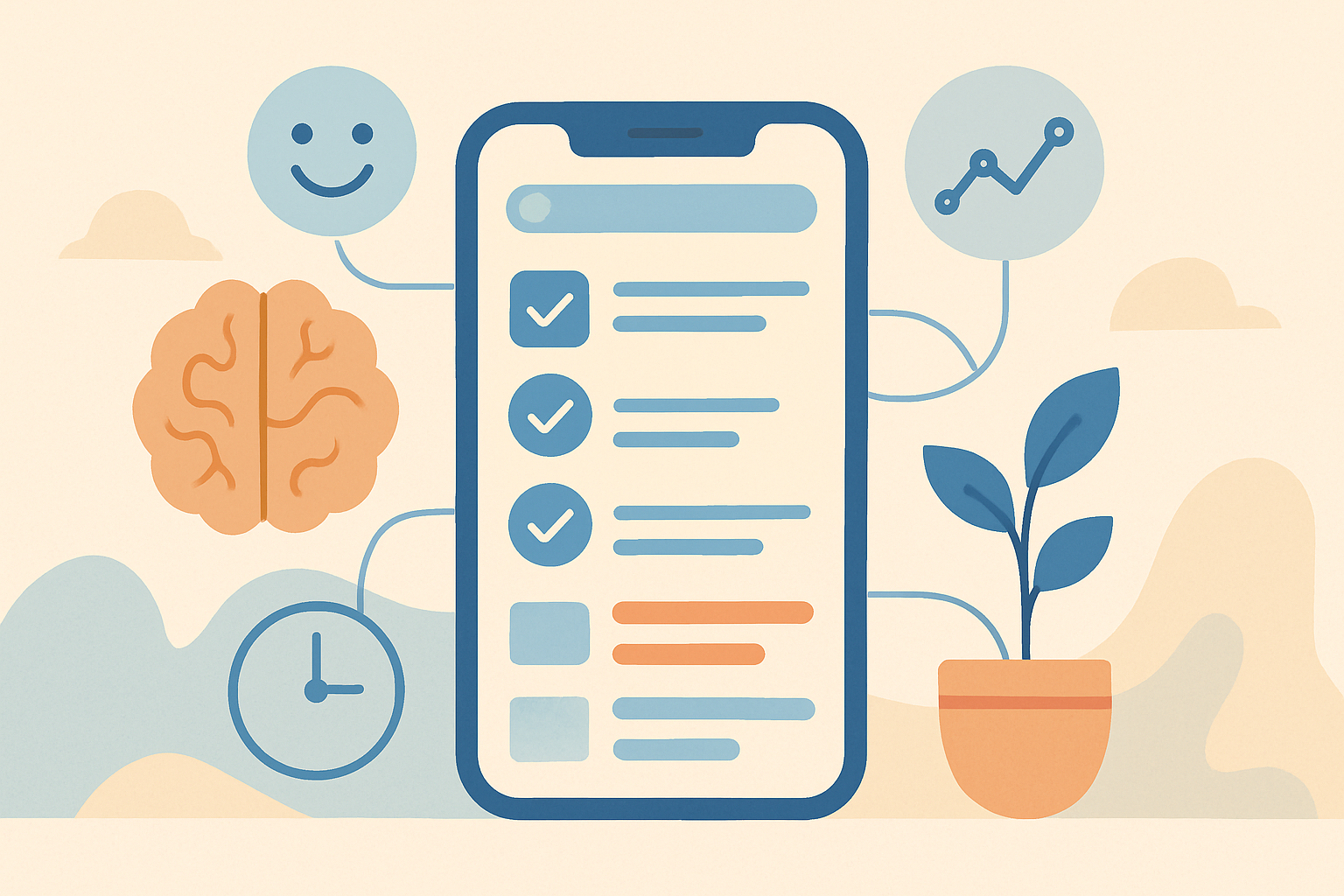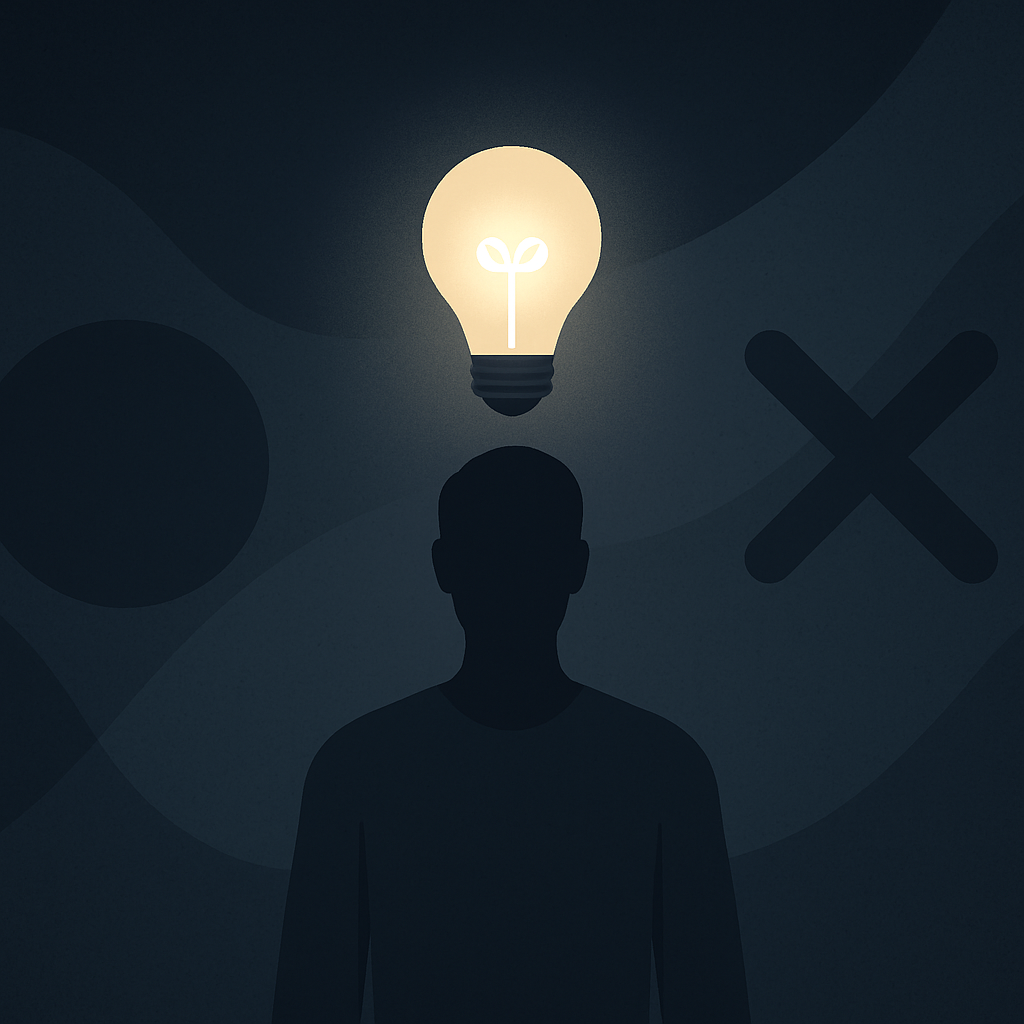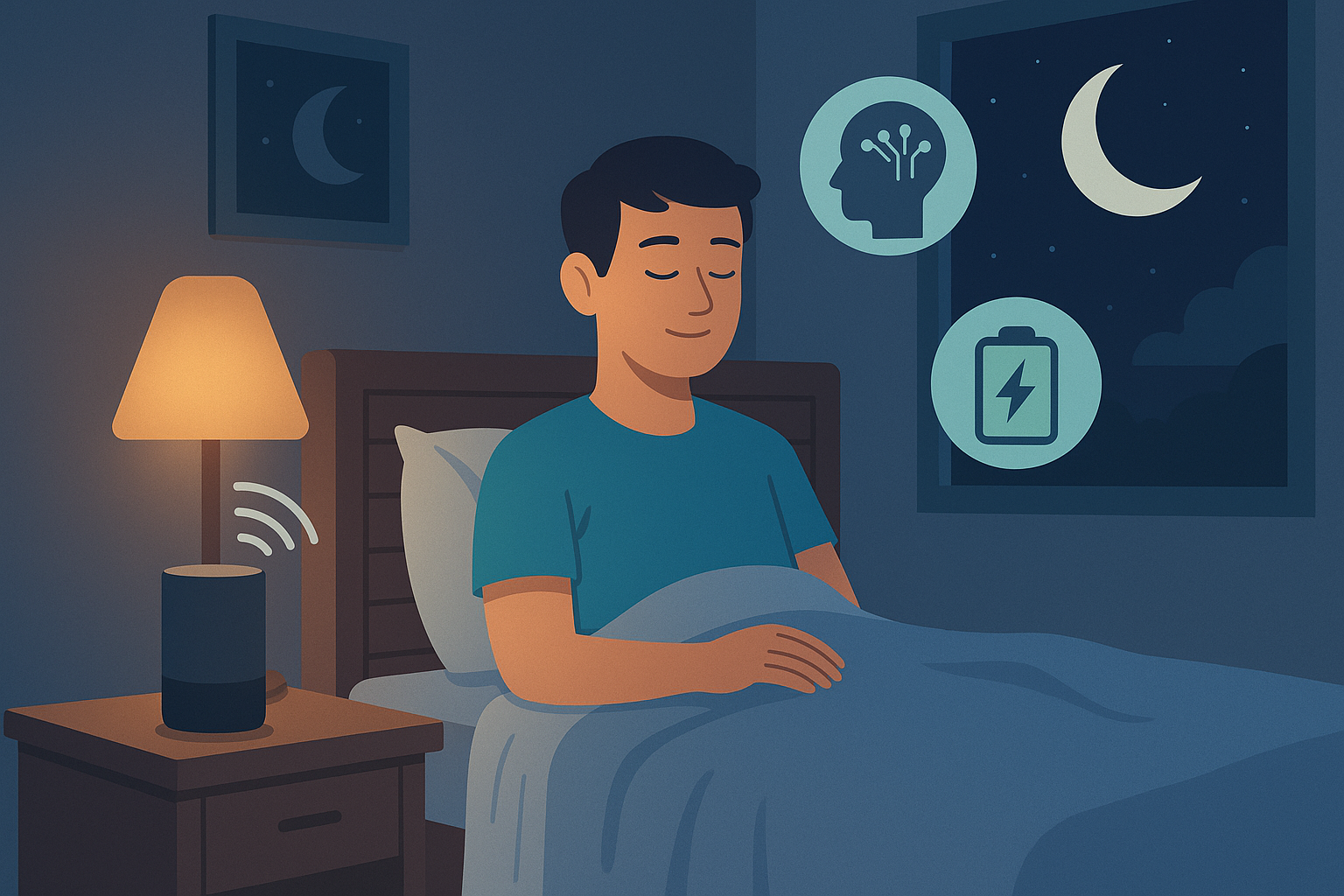Mental clarity isn’t just about peace of mind — it’s the foundation of creativity, decision-making, and resilience.
But in a world saturated with noise, clarity has become rare.
Our attention is fragmented, our cognitive load maxed out, and our brains caught between overstimulation and exhaustion.
The good news? Neuroscience and artificial intelligence are beginning to work together to restore balance — not through control, but through understanding.
AI is learning the language of the mind.

The Science of Clarity
Mental clarity is the state in which cognitive noise fades and awareness becomes effortless.
Neuroscientists define it as a balance between two systems: the default mode network (associated with self-reflection and creativity) and the executive control network (responsible for focus and decision-making).
When these systems are synchronized, thought flows naturally — ideas connect, and distractions dissolve.
When they’re misaligned, we experience mental fog, impulsivity, and burnout.
AI can now analyze the signals behind those states, mapping brain activity, attention, and emotional balance with unprecedented precision.
How AI Enhances Mental Clarity Cognitive Awareness
Artificial intelligence doesn’t create clarity — it reveals it.
By combining neural data, behavioral metrics, and emotion tracking, AI identifies when mental overload begins and how to correct it.
Example:
A platform like Neurable uses EEG sensors to measure focus and relaxation levels. When your brain enters cognitive fatigue, it adjusts the environment — lighting, temperature, or even audio — to restore equilibrium.
At the same time, Notion AI or Mindsera interprets your writing tone and thought patterns, revealing when your cognitive clarity is slipping into stress.
The fusion of these technologies forms a new kind of mirror — one that reflects your mental state back to you in real time.
| Type of Input | AI Function | Benefit |
|---|---|---|
| Neural activity | EEG analysis | Detects fatigue or focus |
| Emotional tone | Sentiment mapping | Identifies cognitive stress |
| Behavior data | Task flow tracking | Reveals overload points |
| Reflection data | Journaling integration | Promotes self-awareness |
This combination turns subjective experience into something measurable — and therefore improvable.
Mental Clarity From Feedback to Neuro-Optimization
Neuroscientists have long studied how external stimuli — light, sound, rhythm — influence brain performance.
AI can now personalize those stimuli dynamically, optimizing your cognitive state for focus, relaxation, or creativity.
Example:
Platforms like Brain.fm generate AI-composed music that synchronizes with your brain’s frequency patterns, guiding it toward calm or alertness.
Similarly, Flowtime and FocusCalm use real-time biofeedback to train the brain to return to clarity faster after stress.
This creates what experts call adaptive neurofeedback loops — where your mind and technology co-evolve in rhythm.
Mental Clarity as a Design System
AI’s greatest contribution isn’t cognitive automation — it’s cognitive architecture.
Instead of forcing the brain to adapt to external pressure, AI designs environments that adapt to the brain.
Imagine this scenario:
- Your AI system tracks your focus rhythm and lowers digital noise before fatigue appears.
- It visualizes your stress curve and suggests a three-minute recovery exercise.
- It detects emotional friction in your writing and prompts reframing questions to restore perspective.
In short: AI becomes your clarity assistant — not by thinking for you, but by thinking with you.
The Mental Clarity Cognitive Flow Cycle
Researchers in applied neuroscience describe “flow” as a four-phase cycle: struggle, release, flow, and recovery.
AI tools are now able to track and enhance each phase.
Example:
- During struggle, Motion blocks unnecessary interruptions.
- In release, Brain.fm adjusts the soundscape to support transition.
- In flow, Reclaim AI maintains uninterrupted focus blocks.
- In recovery, Notion AI generates reflective summaries for integration.
Over time, these micro-interventions form the foundation of sustained mental clarity.
Your day begins to feel structured, not forced.
Emotional Intelligence Meets Machine Learning
True clarity also depends on emotional regulation — the ability to notice and manage one’s inner state.
AI has begun to quantify that invisible layer through affective computing — the study of emotional data derived from tone, rhythm, and facial micro-expressions.
For example, Ellie AI, developed at USC’s Institute for Creative Technologies, was trained to detect subtle signs of stress or anxiety during speech.
This kind of technology can one day help users recognize emotional overload before it manifests as burnout.
It’s empathy through analytics — awareness supported by data.
Example: A Day of AI-Driven Clarity
7:00 AM — FocusCalm measures neural relaxation after sleep.
9:00 AM — Reclaim AI builds a focus block around your peak attention hours.
11:00 AM — Notion AI analyzes your notes, identifying recurring mental clutter.
Afternoon — Brain.fm plays adaptive music for post-lunch alertness.
Evening — Mindsera guides a short reflective journal to reinforce awareness.
The result? A day designed not for output, but for coherence — the rare alignment of thought, emotion, and action.
Table: AI and Neuroscience in Harmony
| Domain | Tool | Purpose |
|---|---|---|
| Neural feedback | FocusCalm, Neurable | Brain state awareness |
| Cognitive rhythm | Brain.fm | Synchronize attention |
| Behavioral automation | Motion, Reclaim AI | Reduce overload |
| Reflective processing | Mindsera, Notion AI | Improve clarity & self-awareness |
This synergy represents a new era in cognitive design: one where technology no longer competes with the brain, but complements it.
The Future of AI and Human Cognition
The next frontier in mental clarity will merge AI analytics with neurophysiological data — brain scans, heart rate variability, and hormonal responses.
Your AI assistant will know not only what you’re doing, but how your mind feels doing it.
Imagine a workspace that senses overwhelm before you do, dimming lights, shifting temperature, or pausing notifications.
This isn’t science fiction — it’s cognitive ergonomics, powered by AI and neuroscience.
When intelligence becomes self-aware — human or artificial — clarity becomes a state of design, not chance.
Conclusion
Mental clarity is no longer a mystery.
It’s a measurable, trainable state — and AI is helping us reach it with precision.
By combining neuroscience’s understanding of the brain with AI’s ability to learn patterns, we’re designing a future where thinking feels effortless again.
The goal isn’t to make the mind mechanical, but to make it harmonious.
And for the first time in history, intelligence itself — both human and artificial — is learning how to rest, reflect, and evolve together.
Further Reading & Related Insights
Internal link:
- AI Tools That Rewire Your Brain for Concentration — Discover how artificial intelligence strengthens attention through neurofeedback and adaptive focus systems.
External links:
- Neurable – Brain-Computer Interfaces for Cognitive Insight
- Brain.fm – AI-Generated Music for Mental Clarity
Blog
This section provides an overview of the blog, showcasing a variety of articles, insights, and resources to inform and inspire readers.
-

AI Habit Tracking and the New Rhythm of Modern Self-Improvement
AI Habit Tracking. Progress used to depend on discipline. Now, it depends on data.…
-

AI Decision Making and the New Discipline of Intentional Living
AI Decision Making. Every “yes” has a cost. Every time you agree to something…
-

The Perfect AI Night Routine to Sleep Better and Think Smarter
AI Night Routine. Your morning doesn’t begin when you wake up — it begins…
